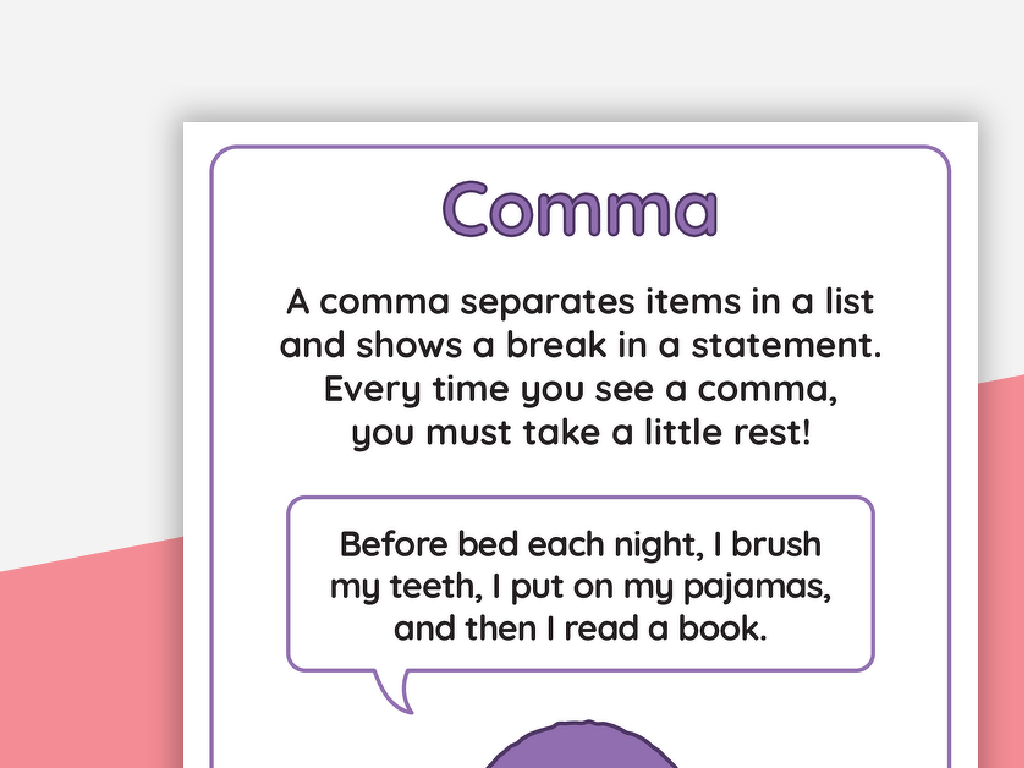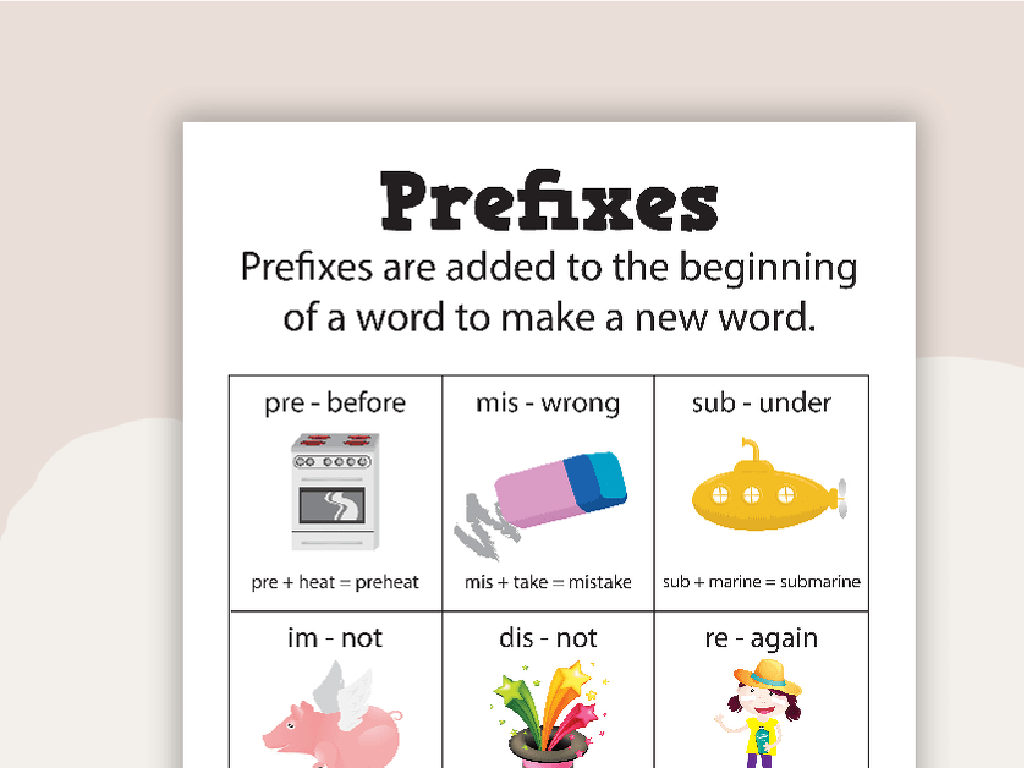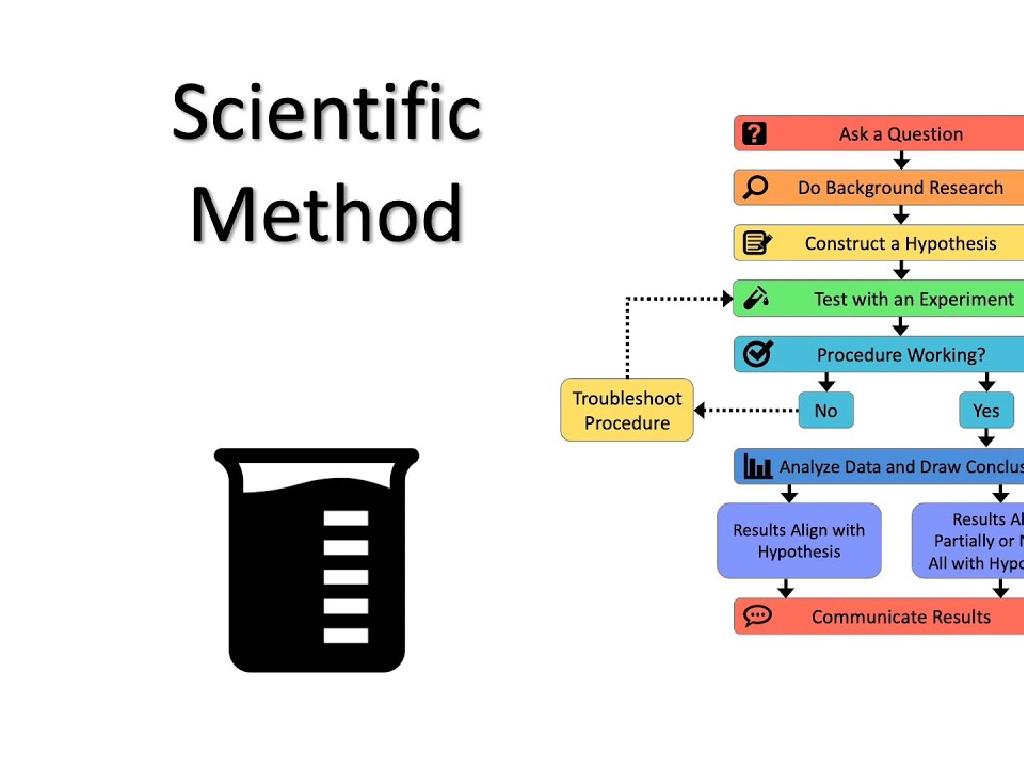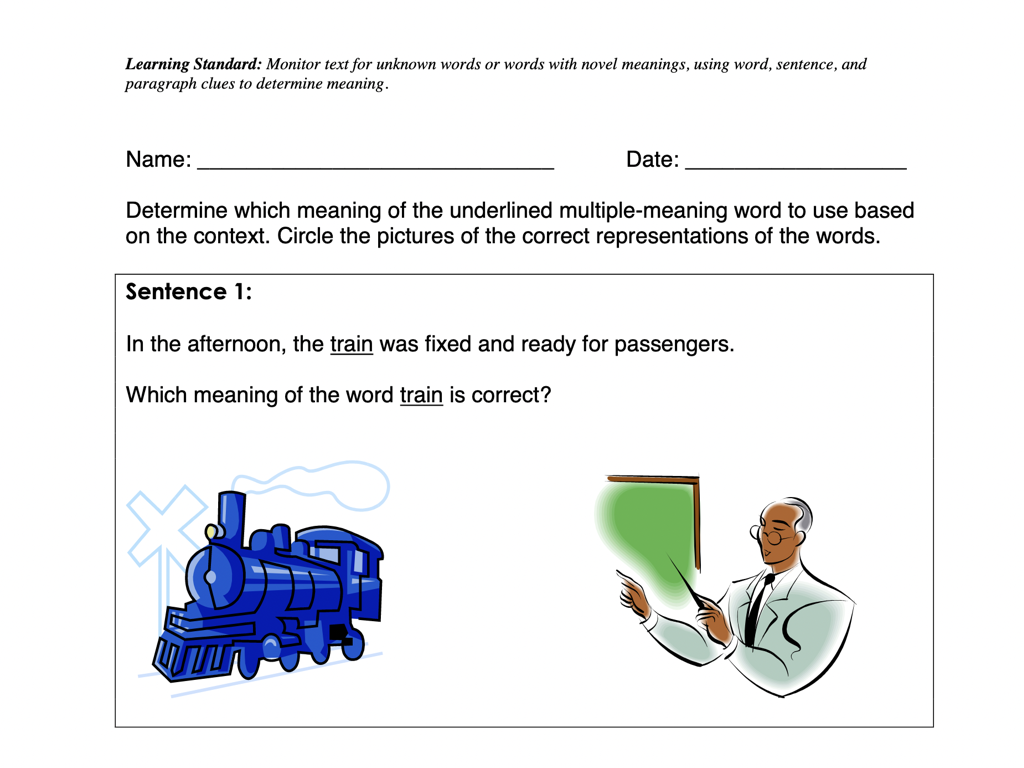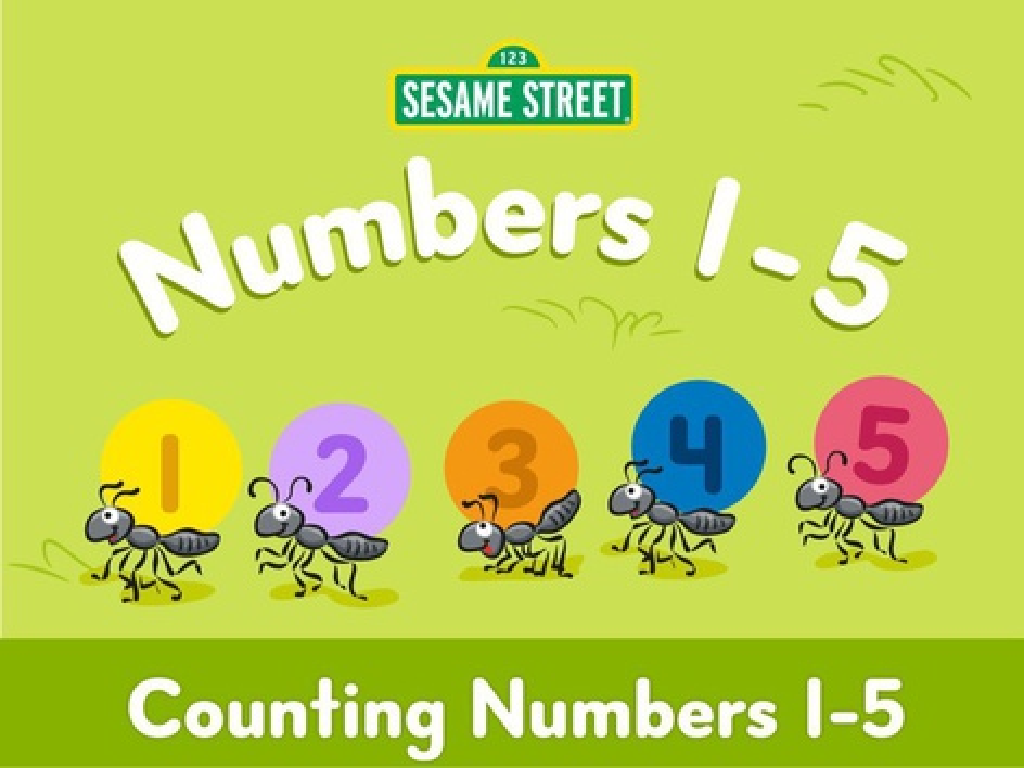Identify Facts And Opinions
Subject: Social studies
Grade: Fifth grade
Topic: Social Studies Skills
Please LOG IN to download the presentation. Access is available to registered users only.
View More Content
Facts vs. Opinions in Social Studies
– Define facts and opinions
– Fact: something proven true. Opinion: personal belief or view.
– Importance in history and events
– Helps critically evaluate information and form educated conclusions.
– Examples of facts and opinions
– Fact: The U.S. has 50 states. Opinion: Pizza is the best food.
– Discuss relevance to today’s lesson
|
Begin the lesson by explaining the definitions of facts and opinions. Emphasize that a fact is a statement that can be proven true or false, while an opinion is a personal belief or judgment that is not necessarily based on proof or certainty. Highlight the significance of distinguishing between the two when studying historical events and current news, as it is crucial for developing critical thinking skills. Provide clear examples of both facts and opinions to illustrate the difference. Engage the students by relating the concept to today’s lesson, asking them to consider why it might be important to identify facts and opinions in the context of what they will be learning.
Understanding Facts in Social Studies
– Define a fact
– A fact is something that is true and can be proven.
– Characteristics of facts
– Facts are objective and not influenced by personal feelings.
– Facts are verifiable
– This means you can check a fact to see if it’s correct.
– Facts in social studies
– For example, ‘The U.S. has 50 states’ is a fact.
|
This slide aims to help students distinguish between facts and opinions, starting with a clear definition of what constitutes a fact. Emphasize that facts are statements that can be proven true or false and are not based on personal beliefs or feelings. Provide examples of facts within the context of social studies, such as historical dates, geographical information, and demographic data. Encourage students to think critically about the information they encounter and to verify facts by consulting reliable sources. This foundational understanding will aid them in analyzing texts and forming well-informed opinions based on factual evidence.
Understanding Opinions in Social Studies
– Define an opinion
– An opinion is a personal belief or judgment, not necessarily based on facts.
– Opinions are subjective
– Subjective means it’s based on personal feelings, tastes, or opinions.
– Opinions based on feelings
– Opinions often reflect how someone feels about something, like ‘Pizza is the best food!’
– Social studies opinion examples
– For example, believing that one historical event is more important than another.
|
This slide aims to help students differentiate between facts and opinions, which is a crucial skill in social studies. Start by defining an opinion as a personal belief or judgment that can vary from person to person. Emphasize that opinions are subjective and often influenced by personal feelings, beliefs, or preferences, rather than objective evidence. Provide relatable examples, such as preferences in food, to illustrate opinions. Then, connect this understanding to social studies by discussing how opinions can shape perspectives on historical events, cultural practices, or social issues. Encourage students to think of their own opinions on various social studies topics and to recognize the difference between these and factual statements.
Comparing Facts and Opinions
– Understand facts versus opinions
– Facts are statements that can be proven true, while opinions are beliefs or views.
– Language clues for identification
– Look for words like ‘best’, ‘should’, or ‘feel’ which often signal opinions.
– Interactive class discussion
– We’ll discuss examples together and learn from each other.
– Share your own examples
|
This slide aims to help students differentiate between factual statements and opinions. Begin by explaining that facts can be verified and proven, while opinions are based on personal feelings and beliefs. Introduce language clues such as subjective adjectives or phrases that typically indicate an opinion. Engage the class in an interactive discussion by asking students to bring examples from their readings or experiences. This activity will not only reinforce the concept but also encourage active participation and critical thinking. As a teacher, facilitate the discussion by providing feedback and guiding students towards understanding the nuances between facts and opinions.
The Significance of Facts and Opinions
– Facts vs. Opinions in Media
– Facts are verifiable, opinions are personal views.
– Recognizing Bias
– Bias can shape our view of facts.
– Critical Thinking Skills
– Use logic and reasoning to think critically.
– Evaluating Information
– Assess credibility and accuracy of information.
|
This slide aims to explain why distinguishing between facts and opinions is crucial, especially in the context of media. Students should understand that facts are statements that can be proven true, while opinions are based on personal beliefs and feelings. Highlight how bias, or a tendency to favor one side, can influence how facts are presented and perceived. Emphasize the importance of critical thinking, which involves analyzing and evaluating information before accepting it as true. Encourage students to question and reflect on the credibility of sources and the accuracy of the information they encounter. This will help them become more discerning consumers of information and develop their analytical skills.
Class Activity: Fact or Opinion?
– Pair up for a fact-finding mission
– Analyze statements on your worksheet
– Determine if each is a fact or opinion
– Group discussion to review answers
– Discuss why you think it’s a fact or opinion
|
This activity is designed to help students understand the difference between facts and opinions. Students will work in pairs to foster collaboration and communication skills. Provide each pair with a worksheet containing various statements. They will read each statement and decide whether it’s a fact, which can be proven or verified, or an opinion, which is someone’s personal view or belief. After completing the worksheet, we’ll come together as a class to review the answers. This will be an opportunity to address any discrepancies and reinforce the concept by discussing why certain statements are facts or opinions. Encourage students to explain their reasoning during the discussion, which will help deepen their understanding of the topic.
Wrapping Up: Facts vs. Opinions
– Review today’s key points
– Practice: facts vs. opinions
Understanding the difference is crucial for critical thinking.
– Homework: Find 4 examples
In a news article or book, identify 2 facts and 2 opinions.
– Explain your choices
Justify why you think they are facts or opinions.
|
As we conclude today’s lesson, it’s important to recap the main points to reinforce the students’ understanding of facts and opinions. Emphasize the importance of being able to distinguish between the two, as this skill is vital for critical thinking and informed decision-making. For homework, students should find two examples of facts and two examples of opinions from a news article or a book. They must also explain their reasoning, which will help them practice justifying their thoughts and further solidify their understanding of the concept. In the next class, we can discuss some of their examples to ensure they’re applying the skills correctly.

